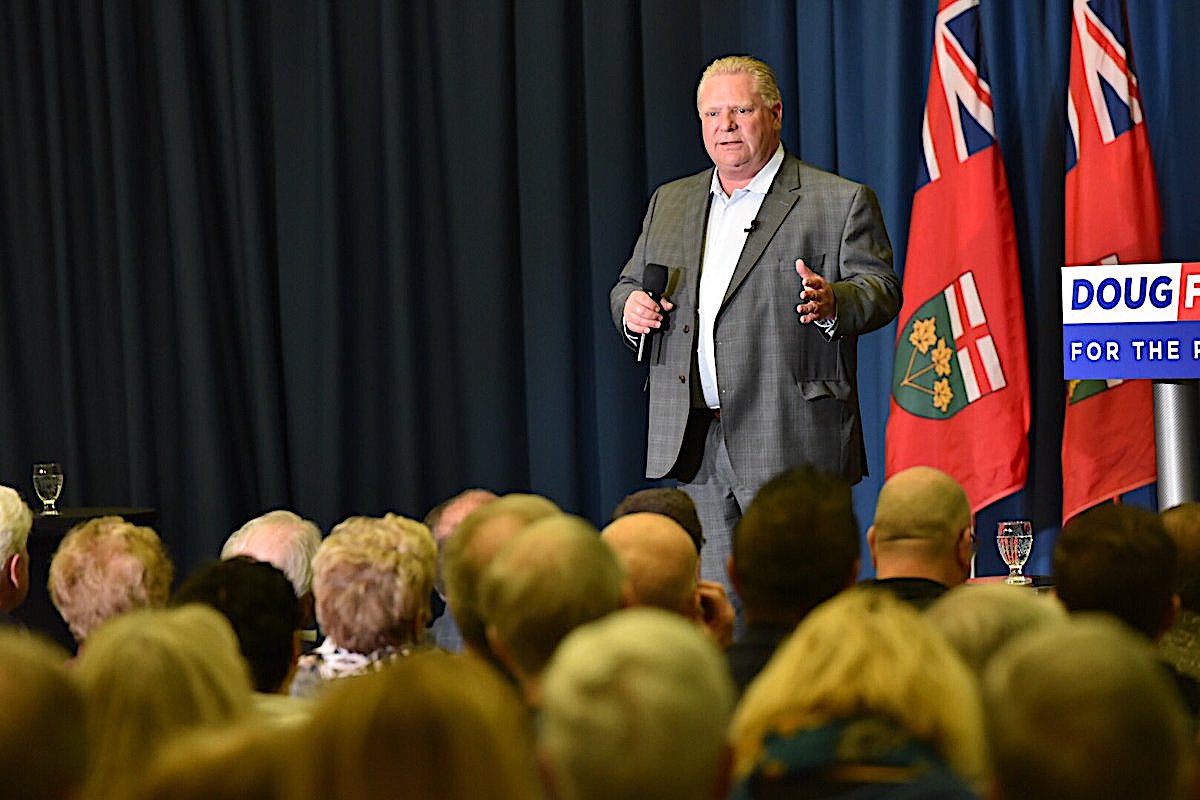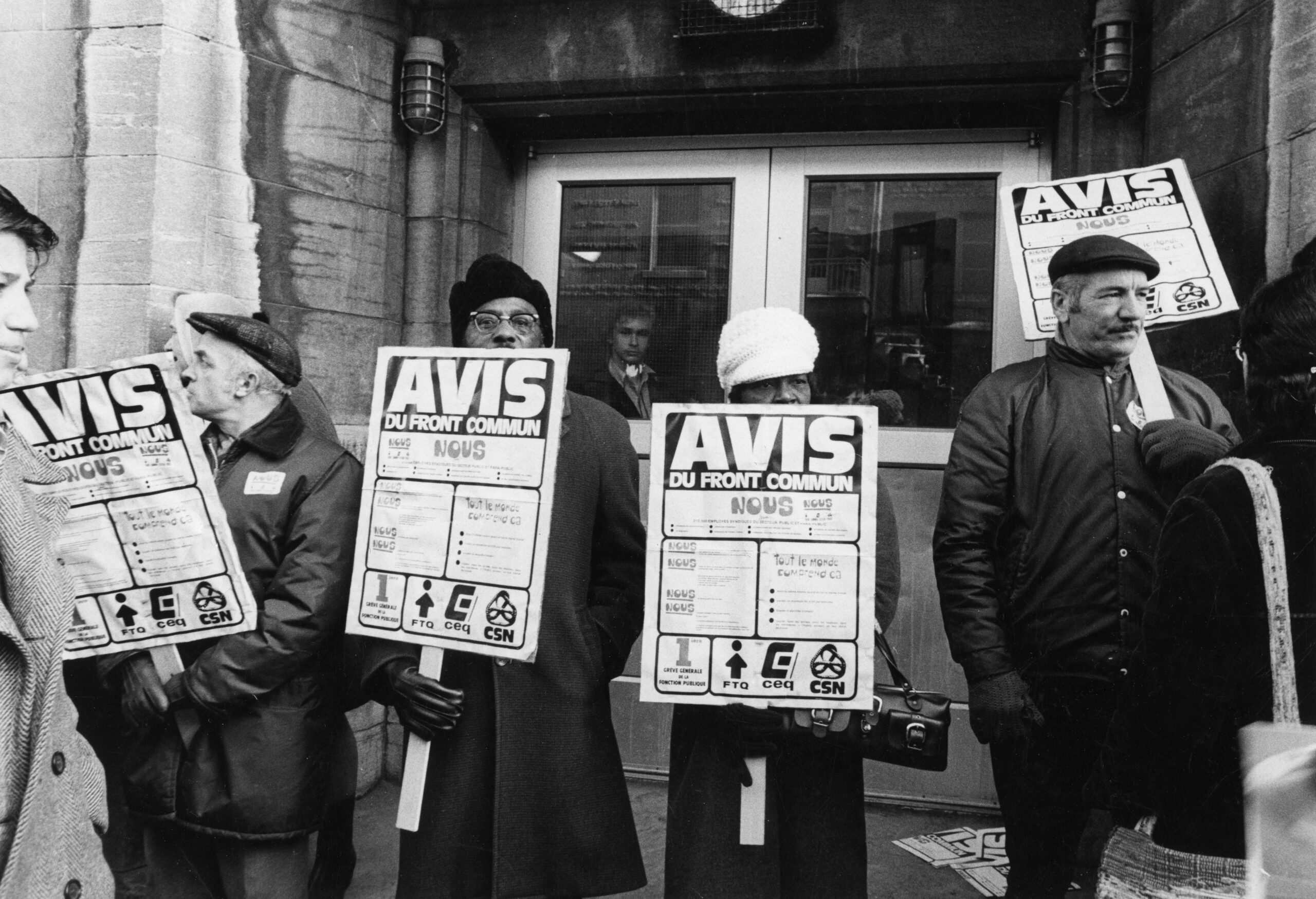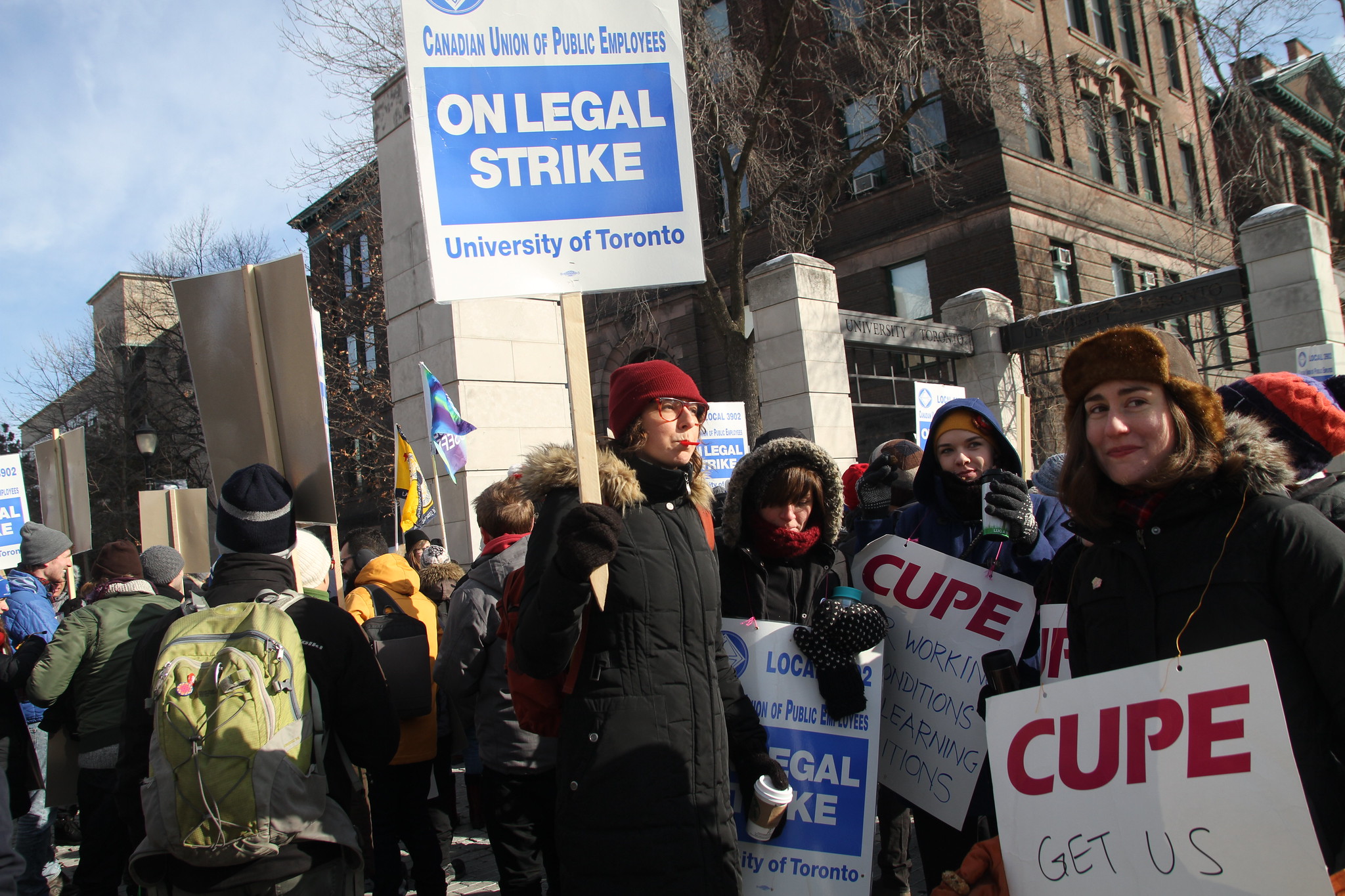U$A
We Don’t Just Need Medicare for All — We Need a National Health System
The founders of Physicians for a National Health Program put single-payer health care on the map. Now, discussing the next phase of the movement, they say even single-payer won’t be enough to fix the problems caused by continued privatization.
May 3, 2023
Source: Jacobin

Physicians for a National Health Program (PNHP) emerged thirty-five years ago amid the austerity cuts of the Reagan administration, which threatened to hollow out critical social safety-net programs like Medicaid. Rather than marshaling physician support to defend the limited (albeit lifesaving) poverty program, PNHP opted instead to pour its energies into expanding the possibilities of what health care reform could look like in the United States. From its inception, PNHP has committed itself to securing universal, comprehensive single-payer national health insurance. Under a single-payer system, all residents of the United States would be covered for all medically necessary services paid for by progressive taxation.
Since the turn of the twentieth century, both US political parties have faithfully accommodated private interests in their proposed health policy reforms. When doctors David Himmelstein and Steffie Woolhandler cofounded PNHP in the 1980s, support for single-payer health care was largely restricted to the radical left and a handful of progressive policy analysts. The doctors’ belief in health care as a public good emerged from their left-wing commitments and their personal experiences having witnessed the unnecessary suffering of patients in the current system. Later, as researchers, they published groundbreaking studies exposing private insurers’ administrative bloat, waste of resources, and widespread denial of care, revealing a health system in desperate need of transformation.
Writing in the Annals of Internal Medicine in 1988, Woolhandler and Himmelstein offered an explicitly Marxist understanding of the political economy that drives American medicine, a system of extraction that generates profit at the expense of patient health and physician autonomy. The authors envisioned an alternative health care system in the United States that would meet the needs of people, not corporations. “A reorientation of policy will require an alternative coalition of forces capable of resisting the imperatives of pecuniary interests,” wrote Wooldhandler and Himmelstein. “Physicians together with other health care workers and our patients may provide such a force.”
Unfortunately, the diagnosis is now even more dire than it was when PNHP was founded. The bad actors are no longer limited to private health insurers; American medicine is inundated by a powerful assortment of private interests from Big Pharma, giant hospital corporations, and private equity firms. Even retail giants like Walgreens, CVS, and Walmart are in on the grift. The private takeover of American medicine imperils the financial and physical health of millions of Americans. Suffice it to say that the prescription offered by PNHP’s physician-researchers remains as necessary today as it was thirty-five years ago.
For physicians and medical students fed up with the status quo, PNHP and its student wing SNaHP represent vital counterpoints to organizations allied with private interests such as the American Medical Association. PNHP today claims twenty-five thousand members representing all fifty states, with local chapters throughout the country. Data analysis by Himmelstein, Woolhander, and other researchers empowers PNHP members to make an evidence-based case for transformative health reform to their patients and their physician colleagues. Working alongside other single-payer standard-bearers like National Nurses United and Democratic Socialists of America, PNHP helped make single-payer, more popularly known as Medicare for All, a household concept. A 2020 Pew survey found that more Americans favor a single-payer system than any other option.
For Jacobin, Jonathan Michels sat down with Woolhandler and Himmelstein to commemorate PNHP’s thirty-fifth anniversary. They discussed PNHP’s inception, how the organization helped propel national health insurance back into the political debate, and the ways single-payer advocates must adapt for the next phase of the movement.
JONATHAN MICHELS
You cofounded PNHP during the rise of neoliberalism in the 1980s. Why did you choose to focus your energy on securing national health insurance at a time when single-payer health care was not really on the table?It was obvious that the financing of the health care system was interfering with the actual practice of medicine.
STEFFIE WOOLHANDLER
I was close to the end of my training as a doctor, and it was obvious that the financing of the health care system was interfering with the actual practice of medicine. The financing system was one of the things that was preventing my patients from getting the care they needed, and preventing me from delivering the quality of care I wanted to deliver. So that was really what motivated me.
DAVID U. HIMMELSTEIN
The Reagan administration was assaulting the care of particularly poor people, and encouraging corporate growth. A number of us who were activists had spent some energy trying to oppose savage Medicaid cuts, and concluded that Medicaid and the targeted programs for the poor were indefensible. They were the worst health care programs of any developed nation, and we couldn’t fight Reagan by defending a lousy program that only helped part of the population. A broad cross section of people in the country were in deep trouble, and strengthening Medicaid would do little for them. At that point we had a number of people, particularly in the Boston area, turn to advocacy for much more radical reforms.
We were working in Boston with a group called the Gray Panthers, a radical elders’ group that a woman named Maggie Kuhn from Philadelphia had founded some years before. In the 1960s and 1970s there had been disagreement between those who advocated for a national health service, where the government would own all of the health facilities and employ the health workers directly, and those who advocated for national health insurance, where the government would take over only the insurance. We wanted to avoid that fight, so we chose a different term: national health program.
JONATHAN MICHELS
What was the impetus for the creation of PNHP?
DAVID U. HIMMELSTEIN
The triggering event was that the Gray Panthers and the groups we were working with were putting on the Massachusetts ballot a referendum instructing (in a nonbinding fashion) their congressional representatives to vote for national health insurance. We were afraid that the Massachusetts Medical Society would come out in opposition to that ballot initiative, and we thought we needed to rally more physician support for national health insurance. In June of 1986, there was a conference of clinicians caring for the poor at a left-wing conference center in New Hampshire. We went to that conference with a plan to propose the formation of a group of physicians for a national health program.We couldn’t fight Reagan by defending a lousy program that only helped part of the population.
JONATHAN MICHELS
Did any individuals or organizations provide a template for PNHP? I see obvious parallels between PNHP and groups like the Medical Committee for Human Rights, whose advocacy work eventually included making demands for universal health care.
DAVID U. HIMMELSTEIN
Well, Steffie and I were both the progeny of the radical left of our generation. I had gone to my first two years of college in Montreal, partly out of fear that I might need to stay there because of the draft, and was actively involved in the radical left and Montreal anti–Vietnam War work. Steffie actually dropped out of college to organize outside a military base in Killeen, Texas. So we were very much on the Left from our mid- and late-teen years on. The Medical Committee for Human Rights was largely fading by the time I was in medical school, so it didn’t have directly a big influence on me, although I knew a number of people who had been active in that and remained active on the Left in medical circles.
I think we were more influenced by the women who were the remains of the Black Panther Party in Oakland, who had formed a group called the Coalition to Fight Infant Mortality. When we were interns and residents at the public hospital in Oakland, we collaborated with them in efforts to improve the maternity services and prenatal care available to the black community. One lesson from that was understanding that systematic research could be a useful piece of advocacy work. One of our earliest research projects was documenting a large number of people refused care at private hospitals in the Oakland-Berkeley-Alameda County area, who were then sent to the public hospital emergency room often in grave condition. That was more formative for us than what really were the remains of the previous generation of the Left in health care.
JONATHAN MICHELS
Why did you decide to focus specifically on mobilizing physicians rather than forming a broader coalition of health care workers?
DAVID U. HIMMELSTEIN
We went with a physician group not just because we saw the need for it, but because we were convinced that the possible reach into the physician community would be much greater if there were a physician group. It was initially formed and the stationery was printed up as Physicians for a National Health Program, a component of the Network of Health Professionals for a National Health Program, and we actually had “NHP squared” stationary printed up.
Our hope was that other health professionals would have their own groups that would form part of a broader coalition. There were some nurses, including some from that conference, who tried to put together Nurses for a National Health Program and social workers who tried to put together Social Workers for National Health Program, but they never really flew.
JONATHAN MICHELS
How did the physician community react to the creation of PNHP?
STEFFIE WOOLHANDLER
The fact that we were able to garner so many members speaks to other physicians feeling something similar. There were a lot of physicians who wanted to focus on how we could change the financing and delivery so that the doctors could actually do their jobs and the patients could get the care they needed. That really helped crystalize some of the feelings that people had — that they were being blocked from doing their job.
JONATHAN MICHELS
Can you describe the process of drafting and publishing the first physicians’ proposal for a national health program, and how that elevated PNHP’s status in the media and within the medical community?
DAVID U. HIMMELSTEIN
Having a concrete proposal published in the New England Journal of Medicine lent tremendous gravitas to the organization and made it very much mainstream in the physician community. In the meantime, we had developed templates for talks that people could give, which were recognizably similar to the kinds of talks that doctors were used to hearing but took a different tack politically. They had slides presenting data quantitatively and making the case in very systematic, evidence-based ways that doctors were comfortable with.They had slides presenting data quantitatively and making the case in very systematic, evidence-based ways that doctors were comfortable with.
We’d been reaching out to colleagues in a small way, but the New England Journal article really put the organization on the map in a very different way, and also put us on the map in the public media. We were invited onto the major news shows of the time. There were two other proposals published for health reform around the same time, and we were often on with those folks. We were very happy when people started characterizing our view as one representing the doctors and assigning us that role.
JONATHAN MICHELS
How did you end up working with Representative John Conyers to craft HR 676, which was introduced into Congress in 2003?
DAVID U. HIMMELSTEIN
After the New England Journal of Medicine article, we subsequently thought we needed a second bite of the apple. We published further proposals in various journals for elements of a national health program: a quality improvement proposal that was published in the Journal of the American Medical Association (JAMA) that Dr Gordy Schiff led the development of, and a proposal for reform of long-term care that Charlene Harrington, a nursing professor and nurse herself at University of California at San Francisco, led the development of.
After that, we thought we needed to restate the original case, because it had been a while since the New England Journal piece. The JAMA had a call for papers about health reform, and we drafted a slightly revised version, particularly addressing the alternative proposals for reform that were circulating at about that time, which was early in the Clinton administration. It was that proposal that Conyers actually picked up as the basis for his plan.
In the interim, in 1990 Steffie had gotten a fellowship financed by the Robert Wood Johnson Foundation. It had a policy fellowship where mid-career health professionals were assigned to some branch of government for a year in Washington as health-policy advisors. Much to the consternation of the people who ran the fellowship for the Robert Wood Johnson Foundation, she decided to take her assignment with Bernie Sanders, who was then a first-term congressman from Vermont, and Paul Wellstone, who was a newly elected senator from Minnesota.
Meanwhile I had been in touch with Conyers’s office, and was supposed to work with his committee on the fiscal impact of single-payer reform. At the last minute, they decided that my continuing role as a leader of PNHP was probably not compatible with working for the committee. So I instead got a part-time job working with Ralph Nader’s and Sidney Wolfe’s Public Citizen’s Health Research Group, and spent that year in Washington, really working in Congress as an advocate for single-payer health care. I got to know the Conyers people not as a staff person, but as an outside lobbyist.
So Steffie and I had fairly close connections in Congress. And when the JAMA piece was published, Congressman Conyers reached out and said we should put in a bill of that. So basically, the bill was drafted almost verbatim from the JAMA piece.
JONATHAN MICHELS
History shows us that it is often corporate Democrats, not Republicans, who impede efforts to secure single-payer health care, whether it is through outright opposition or watered-down reforms like the Affordable Care Act (ACA) that entrench private health insurance.
In a little-known yet important act of civil disobedience, several PNHP members, including doctors Margaret Flowers and Carol Paris, were arrested in 2009 protesting Democratic senator Max Baucus’s refusal to allow single-payer advocates to take part in a committee hearing on health reform.
Reflecting on the subsequent passage of the ACA over the objections of PNHP members, how do you process the betrayal of the single-payer movement by mainstream Democrats?
DAVID U. HIMMELSTEIN
Well, we were very disappointed by the ACA. It was a terrible plan. Better than nothing, but you know, it basically adopted Nixon’s proposal from 1971, which was offered as a counter to Ted Kennedy’s national health insurance plan and had been taken up by the right wing and the Republicans in Congress. We had hoped for much better, obviously.
When Dr Ron Sable died from HIV, Dr Quentin Young, who was a mainstay of the medical left in Chicago when he was still practicing, took over as PNHP’s national coordinator from Ron. One of Quentin’s patients was Barack Obama. Quentin was extremely hopeful about who he referred to on a first-name basis as Barack.
The rest of us were maybe more realistic about it. We were pretty sure that the Democrats wouldn’t, at that point, countenance radical reform. I mean, we’d seen it with the Clintons. Bill Clinton was the first Democratic candidate to abandon national health insurance as part of his platform. Quentin had actually led a sit-in outside the Democratic National Convention that nominated Clinton, protesting the pulling of national health insurance from the platform. So we were pretty realistic about how the mainstream of the Democratic Party would behave.We were pretty sure that the Democrats wouldn’t, at that point, countenance radical reform.
JONATHAN MICHELS
You coauthored a 2022 editorial published in the Nation arguing that Medicare for All is not enough to ameliorate the damage inflicted by the upsurge in hospital consolidations, the incursion of private equity in physician practices, and the steady privatization of critical public programs like traditional Medicare.
Instead, you write, “A transition to public, community-based ownership — a reform model generally labeled National Health Service (NHS), in contrast to [National Health Insurance] — seems the most appropriate solution.” Can you explain what has changed over the last thirty-five years to prompt this shift in your perspective?
STEFFIE WOOLHANDLER
There’s two countervailing things going on. One is that giant for-profit corporations have a much stronger hold on the health care system than they did when we started PNHP. So when we started, we were mostly up against the insurance industry and pharmaceutical industry. But now there’s all sorts of involvement by banks and for-profit ownership of health providers, so that makes things harder.
The other thing is that the health care system continues to be so dysfunctional. People with or without insurance face massive medical bills, the complete inability to afford lifesaving treatments like insulin and sometimes cancer treatments. The growing dissatisfaction among doctors is now often called burnout or sometimes moral injury. Whatever you call it, physicians recognize that the system’s not functioning very well. So the system’s own problems and dysfunctions continually create an interest in and constituency for fundamental health reform.Giant for-profit corporations have a much stronger hold on the health care system than they did when we started PNHP.
DAVID U. HIMMELSTEIN
We need to have a deep understanding of what the problems in the current system are, and the shifts in the organization of the current system need to guide both our program and our political work. So I think we need to update what the vision of single-payer health care is from when we first conceived of it.
We thought we could control the health care system by replacing insurance companies with a single public financing system. And I think that was true as long as health care was essentially carried out by small-scale practices, mostly individual hospitals, that were not parts of large chains, not controlled by giant corporations. But at this point, we have the vertical and horizontal integration of ownership of the health care system. So for instance UnitedHealthcare employs seventy thousand doctors. Just taking away the insurance business isn’t going to be an adequate reform of the health care system.
We need to reconsider our reforms to think about how we seize ownership of health care assets from the corporations that have come to dominate them, and how patients and people doing health care work can really take ownership of this system. I don’t think it’s possible any more by just taking control of insurance. I don’t see a lot of advocacy for radical reform of the health care system, and that I think is the next phase that either PNHP or some new form will need to take up.
JONATHAN MICHELS
What lessons can you share with your experiences of being at the forefront of the movement for national health insurance throughout the last several decades?
DAVID U. HIMMELSTEIN
One is that the Democrats are generally much better when they’re in opposition than when they’re in power. We need to build a power base outside the Democratic Party that’s able to push it. We can’t possibly rely on it to be our main standard-bearer. The party reflects popular opinion; it doesn’t lead it.
A second is that we need to have a program that is going to improve the situation for the vast majority of the population, not just the poor. We can’t actually be in a position of defending the existing health care program. I’ve always been uncomfortable with the term “Medicare for All” because I think Medicare is a very problematic program. It doesn’t cover much of the care that the elderly and disabled actually need, and it has adopted really defective payment mechanisms. It pays hospitals in ways that encourage profit-making and all kinds of bad behaviors. So I think we shouldn’t be in a position of defending elements of the existing health care system, even those that have some positive aspects. Certainly Medicare has positive aspects, but we need to really have a new vision of what the health care system can be.We need to build a power base outside the Democratic Party that’s able to push it. We can’t possibly rely on it to be our main standard-bearer.
JONATHAN MICHELS
As we honor the thirty-fifth anniversary of PNHP and look toward the future, what mark has the organization made on the movement to secure transformative health reform?
STEFFIE WOOLHANDLER
PNHP has often helped push sort of incremental improvements, but more important even than those, it helped prevent the health care system from getting worse. Certainly, the folks who are making money off of the health care system would prefer to ignore poor people, ignore sick people, continue marketing and getting as high prices as possible. PNHP has been a voice within the physician community that has slowed that down and has opposed that push. We’ve kept saying, “We can do better. We need a fully public system, a system that is not oriented around profit, but oriented around population health needs.” We’ve kept that idea out there.












